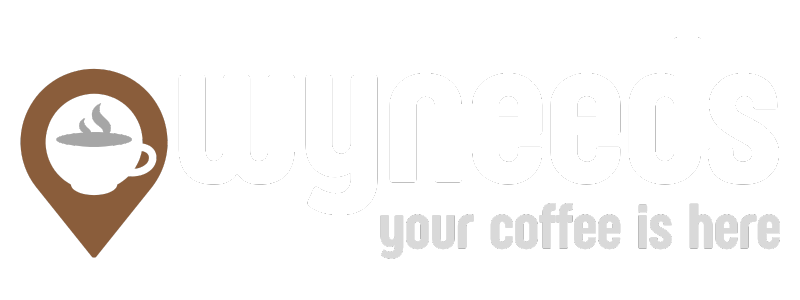Sensory evaluation is a vital part of food science, relying on human senses to assess food products. It’s key for understanding consumer likes, ensuring quality, and enhancing product development. By using sensory evaluation methods, companies can craft products that align with consumer desires. This keeps them competitive. Sensory analysis and science are crucial, guiding companies in their product decisions.
Sensory evaluation is a scientific field that examines how people react to food and materials through sight, smell, taste, touch, and hearing. It’s essential in the food industry for assessing product quality and characteristics. By applying sensory evaluation principles, companies can tailor products to meet consumer tastes. This boosts customer satisfaction and loyalty. Sensory science and analysis offer deep insights into consumer behavior and preferences.
Key Takeaways
- Sensory evaluation is a critical aspect of food science that involves the use of human senses to assess and analyze food products.
- Sensory analysis and sensory science are essential tools in understanding consumer preferences and improving product development.
- Sensory evaluation techniques can help businesses create products that meet consumer expectations and stay ahead of the competition.
- Sensory science and sensory analysis are vital in the food industry, where they are used to evaluate the quality and characteristics of products.
- By applying sensory evaluation principles, companies can develop products that are tailored to specific consumer preferences, leading to increased customer satisfaction and loyalty.
- Sensory evaluation is a scientific discipline that measures, analyzes, and interprets reactions to the characteristics of food and materials as perceived by the senses.
- Sensory evaluation is used in various industries, including food, beverage, and cosmetics, to ensure product quality and consumer satisfaction.
What is Sensory Evaluation?
Sensory evaluation is a systematic method used to evoke, measure, analyze, and interpret reactions to the characteristics of foods and materials. It involves techniques for eliciting, measuring, analyzing, and interpreting human reactions to food characteristics perceived by the five senses. The goal is to understand how consumers perceive and respond to different products, including their taste, smell, texture, and appearance.
The process of sensory evaluation includes consumer testing and flavor profiling to assess the quality and acceptability of products. It is crucial for product development, quality control, and consumer testing. By using sensory evaluation, companies can identify the key characteristics of their products that drive consumer liking and acceptance.
Some common applications of sensory evaluation include:
- Development of new products
- Cost-cutting measures
- Increasing the level of quality
- Product acceptability
- Quality assurance and control
Sensory evaluation is currently underutilized in the food and beverage industry but can provide significant benefits when effectively implemented. By conducting sensory evaluation, companies can gain valuable insights into consumer preferences. This can lead to increased customer satisfaction, loyalty, and ultimately, revenue growth.
The Science Behind Sensory Perception
Sensory perception is how our brains make sense of what our senses tell us. This includes sight, smell, taste, touch, and hearing. It’s a complex process that lets us understand the qualities of food. For instance, our sense of smell and taste work together to create the flavor we experience.
In sensory evaluation, methods like taste tests and olfactory perception are key. Our senses, including taste, smell, touch, hearing, and sight, are crucial. They can be broken down into about 17 distinct types. Knowing these types is vital for effective sensory evaluations.
Some important aspects of sensory perception include:
- The number of taste buds on the tongue varies among people, dividing them into “tasters” and “non-tasters.”
- There are five main tastes: sweet, salty, sour, bitter, and umami (savory).
- The olfactory system has a special link to the brain. Olfactory neurons skip the thalamus and go straight to the cerebral cortex.
Understanding sensory perception helps us value its role in our lives, notably in food and taste. Whether it’s a taste test or checking a product’s olfactory perception, sensory evaluation is crucial in the food world.
Methods of Sensory Evaluation
Sensory evaluation methods are vital for grasping the essence of food products. Descriptive analysis stands out, requiring a thorough description of a product’s sensory traits. It’s key in pinpointing a product’s unique qualities, making it indispensable in product development.
Discrimination testing is another critical approach, aimed at spotting differences between products. It’s a cornerstone in the food industry for comparing sensory aspects of various products.
Common sensory evaluation techniques include:
- Descriptive analysis
- Discrimination testing
- Affective testing
These methods help evaluate food products’ sensory attributes, such as taste, texture, and aroma. By employing these techniques, manufacturers can craft products that align with consumer tastes and expectations.
Sensory Evaluation in Food Industry
The food industry heavily relies on sensory evaluation for quality and safety assurance. Food sensory testing is vital in the production process, identifying any defects or irregularities. A sensory panel, composed of trained evaluators, assesses the product’s appearance, texture, flavor, and aroma.
Enhancing product development is another key use of sensory testing methods. By gathering consumer feedback, manufacturers can create innovative products that meet consumer needs. Sensory testing methods like discriminative, descriptive, and affective tests are used to evaluate food quality and acceptability.
- Discriminative tests: used to detect differences between products
- Descriptive tests: used to describe the sensory characteristics of a product
- Affective tests: used to measure consumer liking and preference
Through these methods, food manufacturers can ensure their products are of high quality and safe. They also ensure these products are liked by consumers.
The Psychology of Taste
The study of taste psychology delves into the intricate connections between emotions, culture, and our preferences for flavors. Emotions can profoundly alter how we perceive taste, with specific flavors triggering intense emotional reactions. Cultural backgrounds also significantly influence our taste preferences, reflecting the diversity of global culinary traditions.
Research indicates a strong bond between emotions and taste. For example, hunger heightens our sensitivity to sweet and salty tastes but doesn’t affect bitterness. Cultural preferences in flavors are shaped by various elements, including climate, geography, and historical traditions.
- Emotions: emotions such as happiness, sadness, and nostalgia can evoke strong emotional responses to certain flavors
- Cultural differences: cultural traditions and preferences can shape our flavor preferences and influence our perception of taste
- Personal experiences: personal experiences, such as childhood memories or family traditions, can also influence our flavor preferences
In conclusion, the psychology of taste is a complex field that reveals the intricate relationships between emotions, culture, and flavor preferences. Understanding these dynamics can deepen our appreciation for how psychology influences our culinary experiences.
Best Practices for Conducting Sensory Tests
Conducting sensory tests demands meticulous planning and a focus on detail. Sensory testing best practices include setting up a controlled environment to minimize external influences. This involves using neutral rooms with controlled lighting and temperature. It also means randomizing sample presentation to reduce bias.
A structured sensory panel setup is vital, consisting of trained and experienced evaluators. These evaluators must accurately assess and describe the sensory characteristics of products. Evaluator training is crucial to ensure evaluators can consistently and accurately evaluate products.
Some key considerations for conducting sensory tests include:
- Using representative sampling to reflect the demographics of the target consumer market
- Utilizing digital platforms for sensory research to reduce time and increase efficiency
- Implementing multi-sensory analysis to provide a comprehensive understanding of consumer experience

By adhering to these best practices and considering the key factors involved in sensory testing, businesses can ensure reliable and accurate results from their sensory evaluations.
| Factor | Influence on Results |
|---|---|
| Environment | Up to 70% |
| Sample Presentation | Approximately 50% |
| Evaluator Training | Up to 90% |
Challenges in Sensory Evaluation
Sensory evaluation is a complex process, influenced by biases in testing and environmental factors. These elements can greatly affect the accuracy and reliability of sensory evaluation results. For example, biases can arise when evaluators have preconceived notions or expectations about the products being tested.
Some common challenges in sensory evaluation include:
- Biases in testing, such as confirmation bias or anchoring bias
- Environmental factors, such as lighting, temperature, and background noise
- Panellist fatigue and variability in taste preferences
To overcome these challenges, it is crucial to employ standardized methods and controlled environments for sensory evaluation. This involves using specialized equipment and software to minimize external influences and ensure consistent results. By understanding and addressing these sensory evaluation challenges, businesses can enhance the accuracy and reliability of their sensory evaluation results. This leads to better product development and quality control.
Tools and Technology in Sensory Evaluation
Sensory evaluation tools, such as data analysis software and sensory testing equipment, are vital in collecting, analyzing, and interpreting data. They help researchers spot patterns and trends, making it simpler to grasp consumer preferences and enhance products. For example, digital sensory management systems save time and reduce errors compared to traditional paper methods.
Notable tools include SensoTASTE software, FIZZ, Compusense, and Red Jade. These tools support both analytical and hedonic methods, fitting various sensory research needs. Data analysis software also streamlines the sensory evaluation process. It automates tasks like assigning questionnaires, panelists, and samples to tastings.
Other sensory testing equipment includes e-nose technology, e-tongue technology, and texture analyzers. These tools offer objective data on flavor, taste, and texture. They help companies meet or exceed consumer expectations. By using these tools and technologies, businesses can gain a competitive edge and make informed product development decisions.
Key benefits of using sensory evaluation tools and technology include:
- Improved efficiency and transparency
- Enhanced data analysis and interpretation
- Increased accuracy and reliability
- Better-informed feedback to suppliers and customers
By leveraging these tools and technologies, companies can optimize their sensory evaluation processes. This leads to better products and increased customer satisfaction.
Applications Beyond Food
Sensory evaluation goes beyond the food world, impacting cosmetics and household cleaning products significantly. It’s essential for evaluating the texture, smell, and look of these products. This ensures they align with consumer expectations and preferences.
In cosmetics, sensory evaluation is key for creating products that are both effective and pleasing. The texture and scent of skincare items, for example, significantly influence customer happiness. In the realm of household cleaning products, sensory evaluation is crucial. It determines the effectiveness and appeal of cleaning solutions, including their smell and usability.

Some key areas where sensory evaluation is applied include:
* Product development: It aids in crafting items that resonate with consumer tastes.
* Quality control: It guarantees products consistently meet sensory benchmarks.
* Marketing: Understanding what consumers like helps tailor marketing efforts to reach the target audience.
By embracing sensory evaluation, companies in cosmetics and household cleaning products can stand out. They can boost customer satisfaction and drive business growth.
Future Trends in Sensory Evaluation
The field of sensory evaluation is rapidly evolving, thanks to breakthroughs in neuroscience and virtual reality. These advancements are paving the way for more immersive and realistic experiences. Recent studies highlight a shift towards more engaging and accurate sensory evaluations.
Research into neuroscience is shedding light on the neural processes behind sensory perception. This knowledge is enhancing our understanding of how the brain interprets sensory information. It’s also leading to the development of more effective sensory evaluation techniques.
The integration of virtual reality into sensory evaluation is another significant trend. This technology enables the creation of lifelike environments. These environments can mimic real-world scenarios, facilitating more accurate product testing.
Using virtual reality in sensory evaluation offers several advantages. It enhances accuracy and reduces costs. It also provides a controlled environment for testing, minimizing biases and improving result reliability.
Looking ahead, we anticipate a greater role for neuroscience and virtual reality in sensory evaluation. This will likely usher in more innovative and efficient methods for assessing and enhancing products.
Recommended Books for Sensory Evaluation
For those looking to dive deeper into the world of sensory evaluation, there are several books that stand out as must-reads. These resources offer a wealth of knowledge and insights, making them invaluable for anyone serious about mastering sensory evaluation techniques.
1. “Sensory Evaluation Techniques” by Charles D. Warne
This comprehensive guide is a cornerstone in the field of sensory evaluation. It covers a wide range of topics, from the fundamentals of sensory perception to advanced techniques in descriptive analysis. Warne’s book is a treasure trove of information, making it a top choice for those seeking a thorough understanding of sensory evaluation.
2. “Sensory Analysis of Food: A Practical Guide” by P. Schlich
Written by P. Schlich, this book provides a practical approach to sensory analysis. It focuses on the practical aspects of sensory evaluation, offering real-world examples and case studies. This makes it an excellent resource for those looking to apply theoretical knowledge in real-world scenarios.
3. “Food Science and Technology: An International Approach” by Reed, Hill, and Strumeyer
This book takes a broader approach, covering the entire spectrum of food science and technology. It includes a dedicated section on sensory evaluation, providing a comprehensive overview of the subject within the context of food science. This makes it a valuable resource for those looking to understand sensory evaluation within a broader scientific framework.
4. “Sensory Evaluation of Foods: Sensory Analysis for Food and Beverage Testing” by Charles D. Warne
Another notable contribution from Charles D. Warne, this book focuses on the practical aspects of sensory evaluation. It covers topics such as descriptive analysis, consumer testing, and the use of technology in sensory evaluation. This book is ideal for those looking to gain hands-on experience in sensory evaluation.
5. “Food Science and Technology: An International Approach” by Reed, Hill, and Strumeyer
This book provides a comprehensive overview of food science and technology, including a dedicated section on sensory evaluation. It offers a broad perspective on the subject, making it a valuable resource for those looking to understand sensory evaluation within the context of food science.
6. “Sensory Evaluation of Foods: Sensory Analysis for Food and Beverage Testing” by Charles D. Warne
Another notable contribution from Charles D. Warne, this book focuses on the practical aspects of sensory evaluation. It covers topics such as descriptive analysis, consumer testing, and the use of technology in sensory evaluation. This book is ideal for those looking to gain hands-on experience in sensory evaluation.
7. “Food Science and Technology: An International Approach” by Reed, Hill, and Strumeyer
This book provides a comprehensive overview of food science and technology, including a dedicated section on sensory evaluation. It offers a broad perspective on the subject, making it a valuable resource for those looking to understand sensory evaluation within the context of food science.
8. “Sensory Evaluation of Foods: Sensory Analysis for Food and Beverage Testing” by Charles D. Warne
Another notable contribution from Charles D. Warne, this book focuses on the practical aspects of sensory evaluation. It covers topics such as descriptive analysis, consumer testing, and the use of technology in sensory evaluation. This book is ideal for those looking to gain hands-on experience in sensory evaluation.
9. “Food Science and Technology: An International Approach” by Reed, Hill, and Strumeyer
This book provides a comprehensive overview of food science and technology, including a dedicated section on sensory evaluation. It offers a broad perspective on the subject, making it a valuable resource for those looking to understand sensory evaluation within the context of food science.
10. “Sensory Evaluation of Foods: Sensory Analysis for Food and Beverage Testing” by Charles D. Warne
Another notable contribution from Charles D. Warne, this book focuses on the practical aspects of sensory evaluation. It covers topics such as descriptive analysis, consumer testing, and the use of technology in sensory evaluation. This book is ideal for those looking to gain hands-on experience in sensory evaluation.
These books are just a few examples of the many resources available for sensory evaluation. Whether you’re a beginner or an experienced professional, there’s a wealth of knowledge waiting to be discovered. By incorporating these books into your learning journey, you’ll gain a deeper understanding of sensory evaluation techniques and be well-equipped to excel in your career.
FAQ
What is sensory evaluation?
What is the history of sensory evaluation?
How do our five senses play a role in sensory evaluation?
What are the different methods of sensory evaluation?
How is sensory evaluation used in the food industry?
How does psychology influence our perception of taste?
What are the best practices for conducting sensory tests?
What are the challenges and limitations of sensory evaluation?
What tools and technologies are used in sensory evaluation?
Where else is sensory evaluation used beside the food industry?
What are the future trends in sensory evaluation?
What resources are available for further learning in sensory evaluation?

Tina Avila is a writer at WyNeeds, where she delves into the rich and diverse world of coffee. With a passion for flavors and brewing techniques, she brings insightful articles covering everything from coffee culture and bean origins to expert tips on making the perfect cup. Her goal is to inspire and educate coffee enthusiasts, helping them enhance their appreciation for every sip.

